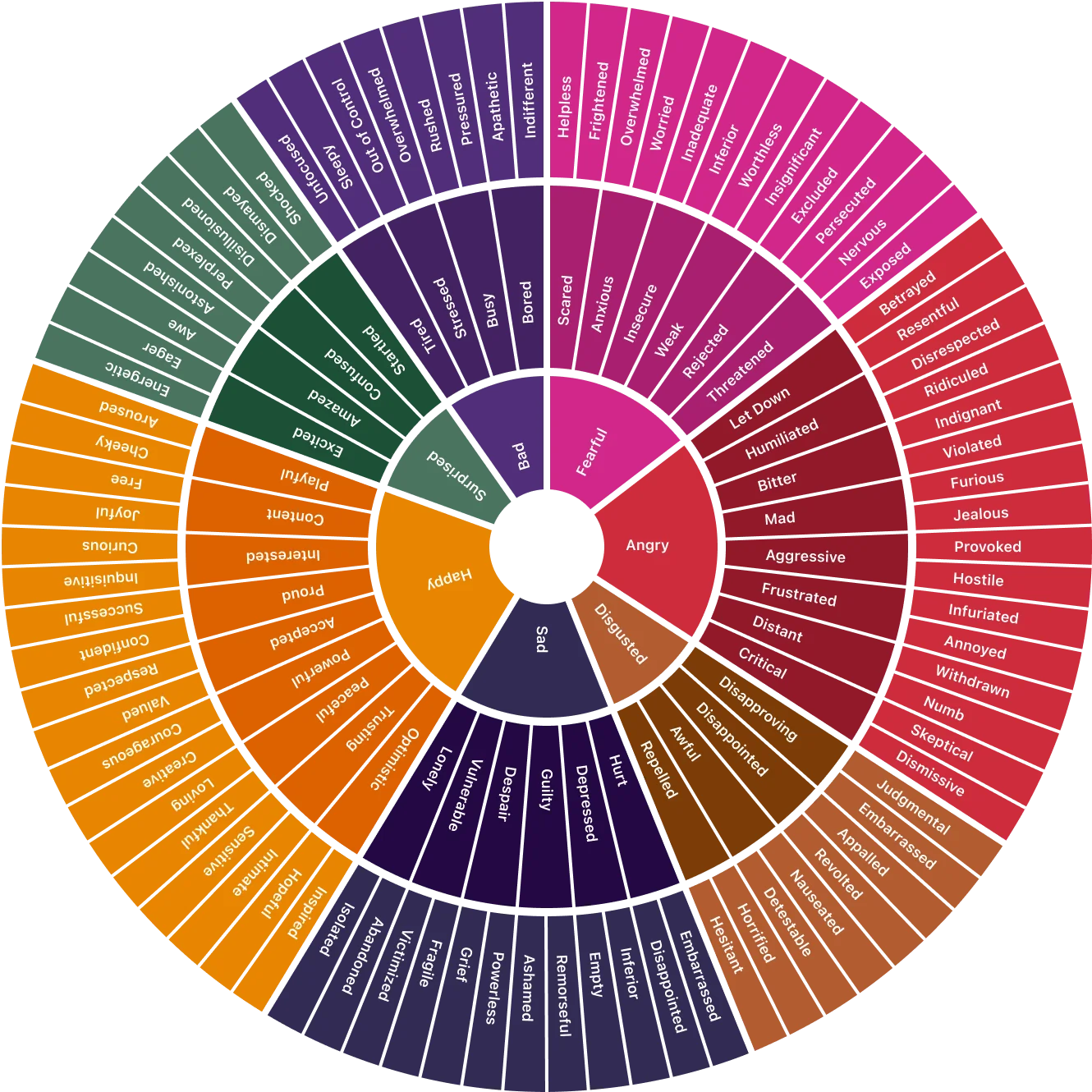Most of us grow up fluent in only a handful of emotional words: “fine,” “stressed,” “good,” “bad.” And when something’s off, we might feel it — a tight jaw, a lump in the throat, a fizzing in the chest — but can’t always name it.
But if we can’t name it, we can’t work with it. That lump in the throat might be grief, or guilt, or shame. That chest fizz? Maybe it’s excitement. Or panic. Or both. And each of those deserves a different kind of care.
What’s This Really About? (Hint: It’s Interoception)
Interoception is your ability to notice what’s happening inside — not just that you’re having an emotion, but how it’s showing up in your body, what it might mean, and how to respond skillfully.
Building that awareness is like switching from black-and-white TV to full technicolor. Suddenly, you realize there’s more going on than “I feel bad.” You feel dismissed. Or tense. Or proud. Or raw. And that gives you a foothold.
Building Your Emotional Vocabulary: A Practice in Precision
Imagine being a chef and only knowing the words “sweet” and “spicy.” That’s kind of what most of us are doing with our emotions. We reach for generic words — maybe out of habit, or maybe because we were never taught how to do anything else.
But emotional clarity is a skill. One you can actually practice.
Here’s how:
- Pause and sense. Where do you feel it in your body?
- Start general. Is it some flavor of sad, mad, glad, afraid?
- Zoom in. Is it disappointment or discouragement? Excitement or anticipation? Annoyed or violated?
- Test it. Does the word match the body sensation? If not, try another.
Why This Matters for Recovery & Self-Regulation
When you name it, you can meet it..
“I feel disrespected” leads to a totally different response than “I feel tired.” Same goes for “I feel dismissed” vs. “I feel scared.” Vague labels keep us stuck. Specific ones point us toward action, boundaries, rest, or repair.
And no, you don’t have to get it perfect.
One Last Tool: The Emotional Vocabulary Wheel

If you need help finding the words, there’s a tool I recommend: a Feelings Wheel. It’s a visual map of core emotions and their more specific shades — from basic to beautifully nuanced.
Try using it. Let it stretch your language. Let it stretch your awareness.




